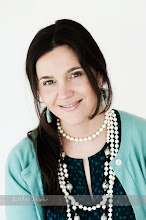Anyway, I wanted to share a little bit about Trans Fat/ Hydrogenated Oil/ Partially Hydrogenated Oil. I know many of you reading this might think that this is such old information. However, there are still lots of trans fats lurking in your prepackaged foods - its sly and smarmy and has a way of getting around the red tape. So, it is still an issue and if not in your home, then when you are dining out.
The reason I want to share is because there is a lot of confusion about good foods and bad foods, which is why I think my job is really important work.
To give you an example of how hydrogenated oils are created I am going to walk you through how margarine is made:
1. Use a polyunsaturated vegetable oil - corn, soybean, safflower, cottonseed. These oils are created through a chemical process (ever try extracting oil from corn in the kitchen?!). Extracting the oil requires extremely high heat, which breaks down the oil - meaning it is oxidized. The oil is turned rancid (creating free-radicals when consumed).
2. Now add tiny metal particles (usually nickel oxide) and mix.
3. Then place in a high temperature, high pressure reactor.
4. Add Hydrogen gas (Hydrogenate)
5. Add some emulsifiers (soap-like) to get it creamy
6. Then clean it (steam clean) by removing the metal particles as much as possible (because they are toxic).
7. Then artificially flavor and color it so that the grey-like substance that is created can look more like a traditional food, hence more appealing.
8. Package. Market. Get people to eat it....YUM!
Actually, the way that this process was discovered was by chance. Procter & Gamble was trying to come up with cheap sources to make candles. Lard and tallow were too expensive, so they needed to find a new way to be resourceful. Once they realized what they created, and how cheaply they did it, they figured they had a new product to introduce into the market. And since they were trying to come up with something that imitated lard, why not market it as a lard alternative? They named it Crisco. Check out the link for a full story.
What are the problems with these man made fats? Well, the process sounds pretty disturbing, but besides that there are serious health risks associated with these supposedly "Heart Healthy," imitation food alternatives, such as:
- Coronary Heart Disease
- Infertility
- Obesity
- Diabetes
- Liver Disease
- Cancer
- Alzheimer's Disease
- Belly fat
- Pastries and cakes
- French fries (unless fried in lard / dripping)
- Doughnuts
- Cookies / biscuits
- Chocolate
- Margarine
- Shortening
- Fried chicken
- Crackers
- Potato chips
- Prepackaged Foods (check your cupboards)
Even if you are being careful, it is a challenge in many restaurants. New York City banned all trans fats. Let's hope that the rest of the country jumps on this bandwagon. The sooner the better. In the mean time, be aware that when you eat out you should ask if the restaurant uses trans fats in preparing whatever dish you want to eat.
Another point to make is that you must read food labels. The product may claim it has 0 trans fat, but indeed when you turn it over - it has a smidgen. The industry is allowed to claim 0 trans fat provided that it has less than 0.5 grams. BOOOO. Anyway now that you know tell EVERYONE! Check out this label.
NOTE: A new fat on the market you want to be aware of is called: interesterified fats. These fats are showing up and they are similar to trans fat in their negative effects. If you can't pronounce an ingredient on a packaging label or the label has too many ingredients, then my advice would be to set it down.
Books of Interest:
Cereal Killer - The Unintended Consequences of the Low Fat Diet by Alan L. Watson
Real Food by Nina Planck
Nourishing Traditions by Sally Fallon
What to Eat by Marion Nestle







No comments:
Post a Comment